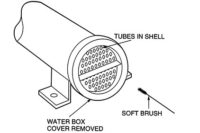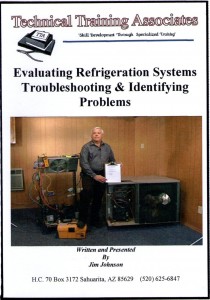Bob is a service technician who is well trained and nationally certified. However, he has sometimes suffered from the same confusion that all technicians occasionally do — the facts that he gathers may or may not point to the obvious cause of the problem or the best solution. But Bob has had something that no one else has. He recalled his long-time HVACR mentor and imagines him accompanying him as “Btu Buddy,” someone who reminded him to take time to stop and think before rushing to judgment, helping keep him on the right track, even with facts that are confusing.
Now, Bob’s company has promoted him to help train a new employee, right out of a school specializing in HVAC, just like Bob was. Bob is now Tim’s Btu Buddy. Tim is anxious to travel with Bob. Tim realizes that he is right out of school, with the theory and lab work that he accomplished in school, but still needs help. He knows that he worked with many of the components of the systems in the school, under ideal conditions with good light and air conditioning. Now it is into the field, sometimes under the house with poor lighting, or out on the rooftop in the sun, where the real action is. He is naturally and normally reluctant, but he has Bob to help guide him.
Bob and Tim were on their way to a no cooling call at an office building with a 100-ton water-cooled chiller. As always, management was in a hurry to get the problem solved because the tenants were hot.
They went to the equipment room and noticed that the chiller was not running. They were looking over the equipment when Tim said, “The flag is up on the high pressure shut off control.”
Bob said, “Don’t reset it until we look around. We should look at the cooling tower and the water flow.”
They went to the roof and looked over the cooling tower.
Bob said, “There is enough water flowing over the tower and the water looks clean. Check the tower basin, does it look clean?”
Tim said, “The basin has a lot of green algae slime in it, but the water looks clean.”
Bob said, “Let’s go downstairs and start the system up and see what happens.”
They went down and started the compressor up. The system had a permanent set of gauges.
Bob said, “Watch the gauges and see what they are doing. I am going to look at the rest of the system.”
The system ran for about 10 minutes and Bob said, “The water entering is 83°F and the leaving water is 88° according to these thermometers, assuming they are correct. It looks like the water is not taking the heat out of the refrigerant. The liquid line is getting warm to the touch. What is the discharge pressure doing?”
Tim said, “The head pressure is rising; it is up to 242 psi. What is the high pressure cut out supposed to be?”
Bob explained, “The high pressure cut out for an R-22 water-cooled chiller is typically around 275. The typical condensing temperature for a water cooled R-22 system works like this. The cooling tower in our locality can usually deliver water to the chiller at 85°. That is because the cooling tower can deliver water to the chiller that is 7° higher than the design wet-bulb temperature, which is 78° (78+7=85). Saying it another way, the tower has a 7° approach temperature to the wet-bulb temperature. There are two relationships here that are important:
1. The tower water temperature at the tower basin — how cool the tower can furnish the water — associated with the ambient wet-bulb temperature (Figure 1). The basin temperature should be about 85°.
2. The relationship of the condensing temperature of the refrigerant to the water temperature leaving the condenser. The condensing temperature should be about 10° higher than the leaving water temperature (Figure 2).
“There is also one other relationship that should be considered, the water temperature rise across the condenser. It is the same as the temperature drop from the top of the tower to the basin. That temperature difference should be about 10° for a typical water-cooled system. Now let’s see what this system is doing.”
Tim said, “The cooling tower water is entering at 83° and leaving at 88° and the head pressure is at 229 psig, corresponding to about 112°. Something isn’t going good. It looks like the compressor is going to shut down on high pressure any minute. What do you think?”
Bob said, “I think you should shut the compressor off and let’s talk about this. It is not quite 95°, the design dry-bulb temperature, and the wet-bulb is probably not the design temperature of 78°, but I think that we can draw the conclusion that the condenser has dirty tubes. Let’s talk to the manager and see if we can get ready to clean the tubes.”
The manager said, “This is a good time to clean the condenser tubes. It’s near the end of the day and we are having a conference here tomorrow. Surely you can get it going tonight.”
Bob said, “Yes we can, but it is going to involve some overtime. Is that good with you?
The manager agreed.
(To be continued.)
Publication date: 6/23/2014
Want more HVAC industry news and information? Join The NEWS on Facebook, Twitter, and LinkedIn today!










